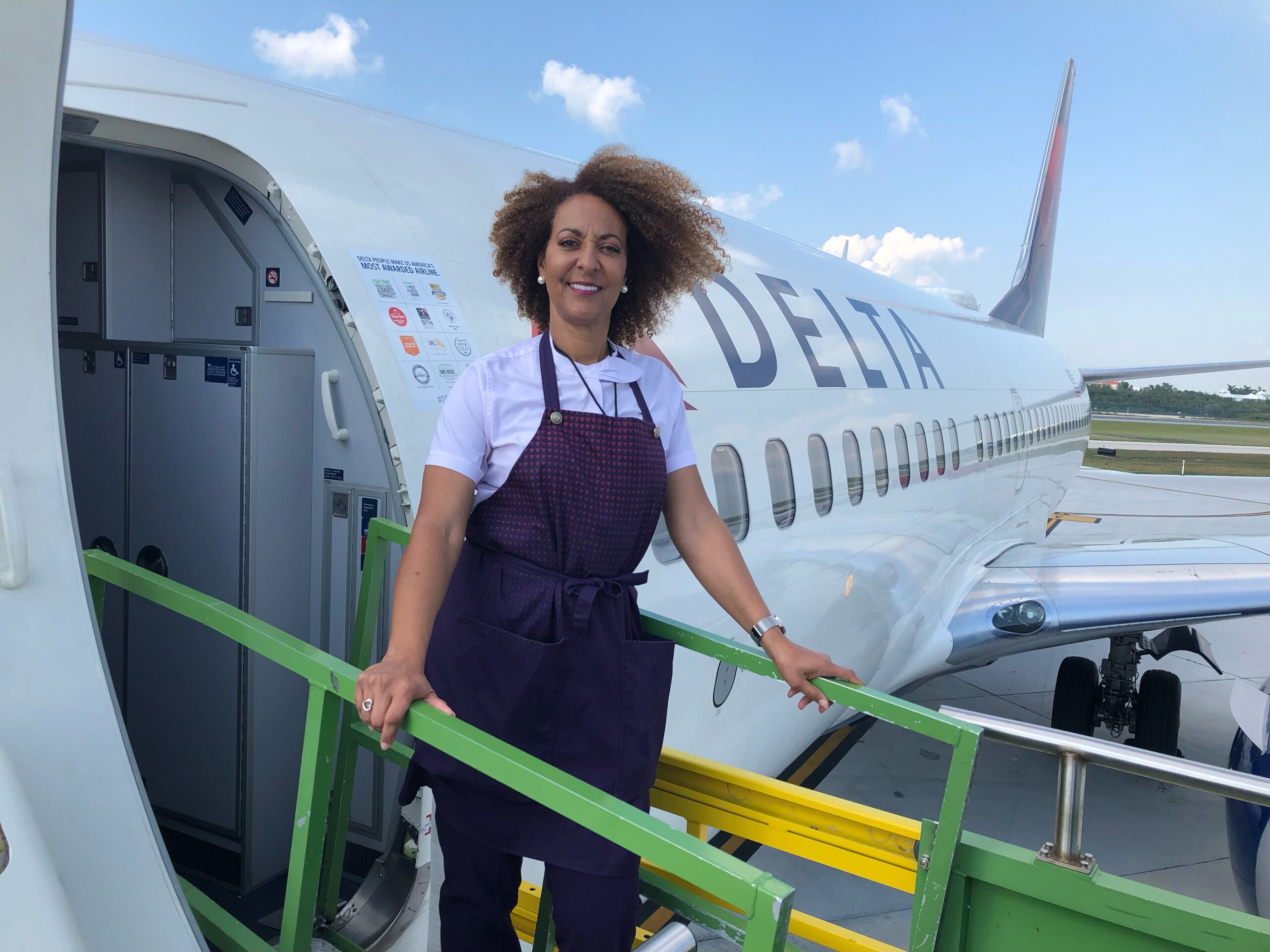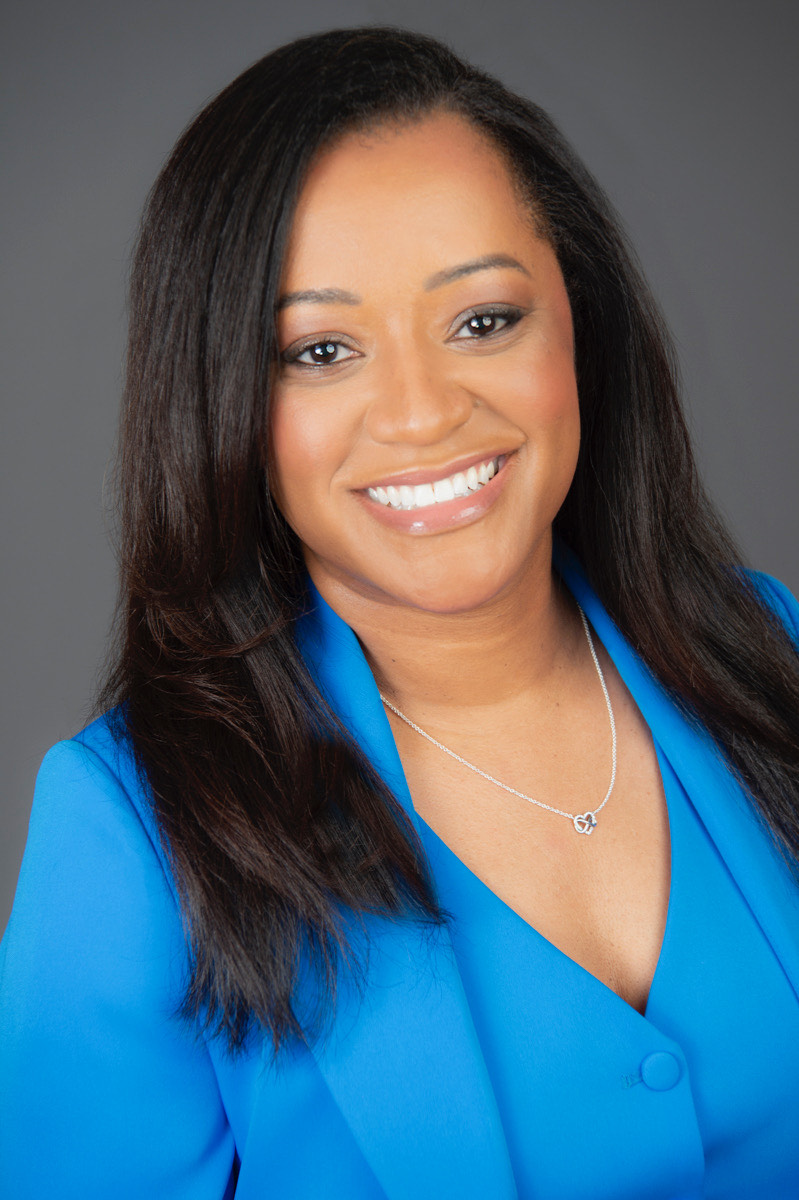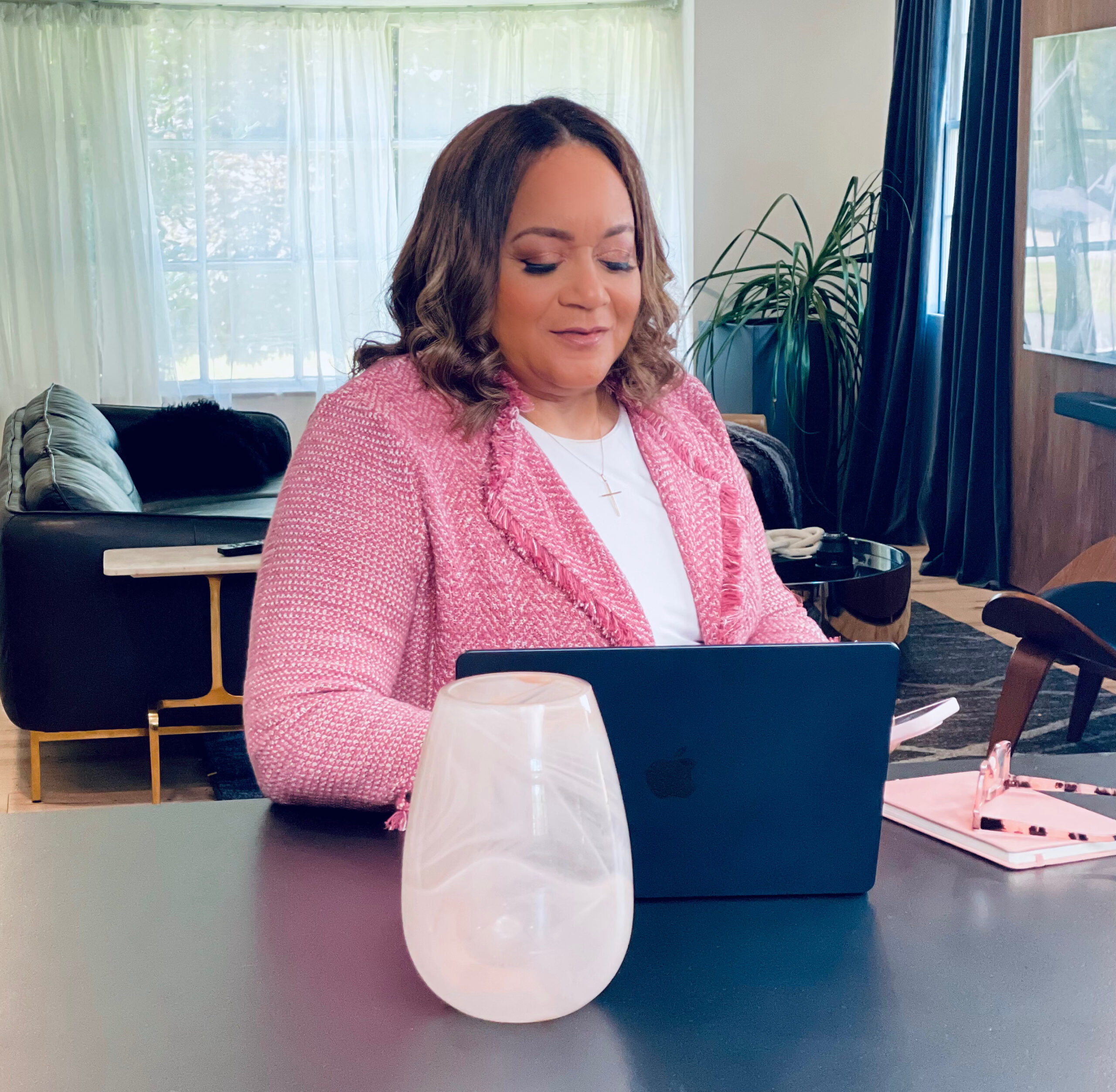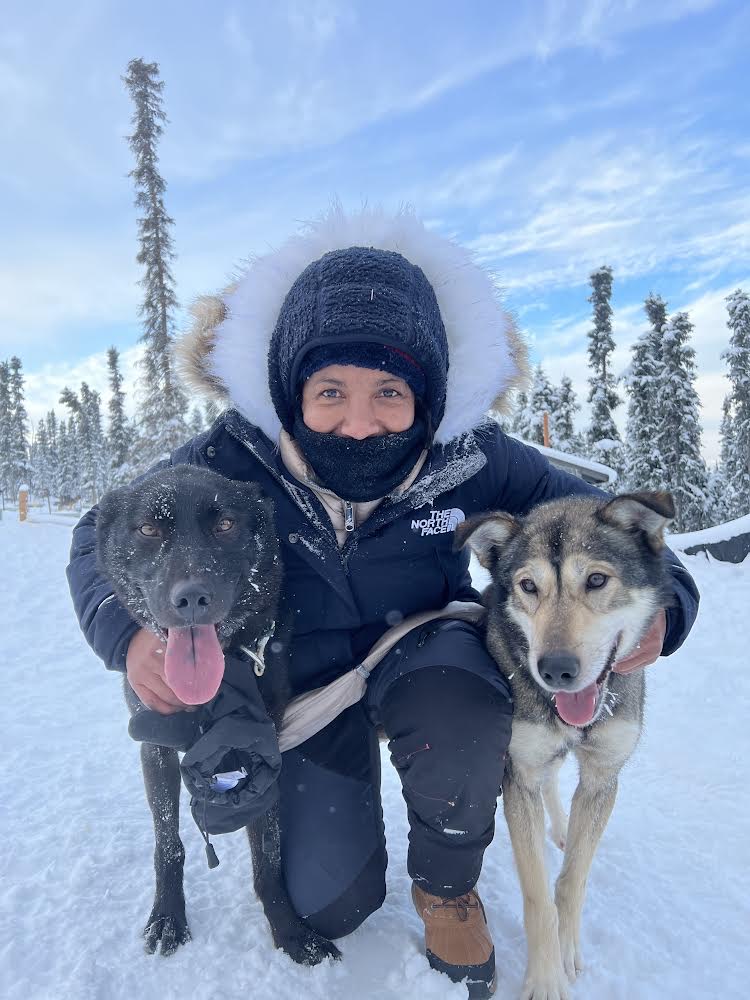With the holiday travel season here, there’s a mix of anticipation and uncertainty as you prepare for your next adventure. Flying has changed, but Libbi Toye-Sampleton, a seasoned flight attendant with 42 years of experience at Delta Airlines, understands. She’s here to make your flight experience wonderful with today’s air travel etiquette.
Libbi shares invaluable knowledge for navigating the skies with confidence. She understands your unique needs and wants you to know that when you see her, you have a friend in the sky. As you prepare for your holiday getaway or any adventure, Libbi’s insider secrets become your cherished gems. These valuable tips can be applied anytime, anywhere, making every journey memorable. Her wisdom empowers you to soar through the clouds with poise and style.
So, let’s equip ourselves with knowledge and confidence to enhance our travel experiences. Let Libbi’s wisdom guide us as we take flight, knowing we’re not alone. Together, let’s make every journey a celebration of who we are and the incredible experiences that await us.
AIR TRAVEL ETIQUETTE: BOARDING
The boarding process is your first interaction with the flight crew. As a passenger, this is your chance to acknowledge the flight attendant and show appreciation for the service you are about to receive. Simply smiling and saying hello to the crew as they welcome you on board can go a long way in building rapport.
I asked Libbi if proper air travel etiquette calls for tipping flight attendants, and she shared, “No, it’s not expected or required. However, some frequent fliers like to express their appreciation when boarding by giving a few $5 gift cards or wrapped candy to the attendant, which they can share with the crew. They might say something like, ‘I appreciate you being here’ or during this time of year, ‘Happy Holidays’.”
Did you know that needing assistance with a bag that is clearly too heavy is a hazardous task they face, including not being covered by workers’ compensation if they injure themselves from the physical strain.They are technically not on the clock until the doors close. It is important for passengers to be mindful and not expect flight attendants to lift their bags if they know they are unable to do so themselves. Instead, checking the bag at the gate is a more appropriate solution as flight attendants are only able ‘to assist, not lift’. It is surprising to realize that the individuals who assist with boarding, provide pre-flight services, aid parents with their children, offer friendly greetings, ensure proper seating, and perform numerous other tasks are not compensated for these services, including during connecting flights and delays.
Speaking of bags, pack a soft-sided carry-on that can fit snuggly underneath the seat in front of you. You should include enough essentials to cover you not only on the flight but also in the event of a delay in travel. Don’t forget a neck pillow and travel blanket, medications, tech gear, and extra change clothes. Review TSA’s Checklist, before packing to see what you can bring on board. If you’re traveling with a medical device or medication, review your airline’s guidelines so you’re prepared to travel.
During the chaotic process of boarding, it is important to avoid asking for water from the crew. They have numerous safety tasks to handle and cannot accommodate such requests during this time. Crew members have expressed frustration with passengers asking for water to take medication during boarding, as there are plenty of opportunities to hydrate before boarding the plane. It is recommended that passengers prepare themselves by getting a bottle of drinking water before boarding, as the crew has limited time to get everyone seated and ready for departure.
On a similar note, it is important to plan bathroom trips in a way that does not inconvenience the crew and other passengers during boarding. Again, take time to stop in the restroom before arriving to the gate to board your plane. Crew members expressed frustration when passengers choose to get up and go to the bathroom despite seeing them in the aisle.
AIR TRAVEL ETIQUETTE: PET PEEVE
Pets on planes can be a major source of frustration for Iris Cumberbatch, an airline traveler who is allergic to cats and dogs. She believes that while service animals are necessary for some individuals, many people are taking advantage of the system by purchasing fake service animal vests and leashes online to bring their pets on board. This not only irritates Iris, but also causes her physical discomfort, including wheezing and coughing, during flights.
Iris, who travels nearly every week, deems it inconsiderate when passengers choose to bring their pets on the plane instead of utilizing cargo options. Contrary to common misconceptions, Iris has learned that cargo travel is actually safe for pets. The US Department of Transportation reports that on average, less than 25 out of the 500,000 pets transported in cargo each year meet an unfortunate fate. Airlines are required to report any animal deaths in cargo to the government.
Unlike the accommodation provided for passengers with peanut allergies, there is no system in place to address pet allergies. Therefore, Iris takes matters into her own hands and checks with gate agents before each flight to determine if a pet is on board and its location. If necessary, she requests a seat change, although this can be challenging on smaller planes due to limited seating options.
As a fellow sufferer of pet allergies, I recently had an experience on an American Airlines flight in 2022 that I want to share. I was seated in the bulkhead row, by the window, when I noticed a dog occupying the middle seat next to me (you can watch the video above for reference). While the dog appeared to be cute and well-behaved, I couldn’t help but feel uncomfortable due to my allergies. When I voiced my concerns to the owner, he dismissively replied, “He’s hypoallergenic.” This response left me annoyed because, as the American Kennel Club explains, there is no such thing as a completely hypoallergenic dog breed that guarantees no allergic reactions in individuals. Unfortunately, I wasn’t aware of the proper etiquette for having dogs onboard during air travel, leaving me uncertain of my options and causing me to suffer in silence.
Libbi, a proponent for improved airline policies, praises Iris for advocating for herself at the gate. She believes that Iris did the right thing by standing up for her needs as a passenger with allergies. Libbi recognizes the importance of accommodating passengers with service animals, but also acknowledges the need for stricter verification processes. She suggests that airlines should implement more thorough checks in order to prevent misuse of the system. Libbi understands the diverse needs of passengers and the significance of creating a comfortable
and safe environment for everyone.
Related: Refer to the Federal Aviation Administration Pet Policy. Before you leave, make sure to check your airline’s online pet travel policy.
AIR TRAVEL ETIQUETTE: MICRO AGGRESSIONS AND DISTURBANCES
Visualize going through the humiliating experience of being subjected to a thorough pat-down by TSA because the pins securing your full bodied wig triggered the alarm. Finally, you make it onboard the aircraft, only to find yourself seated next to a middle-aged white man who gives you a suspicious glare. He immediately gathers his belongings closer to himself, assuming you may try to take them. Despite offering a polite half-smile, he dismisses you and proceeds to make derogatory comments about your race. The tension intensifies as he continues to make offensive assumptions and refuses to acknowledge his biases. Thankfully, the flight attendants intervene, recognizing the need for your comfort and safety, and offer you an alternative seat.
You may experience various micro aggressions while traveling by plane. These can include instances where you are subjected to stares or suspicious glances, being treated as an exception to stereotypes about black people, subtle comments or questions that belittle your accomplishments or intelligence, being ignored or overlooked by flight attendants or other passengers, or being questioned or challenged on your right to be in a premium seat or to have certain privileges. These micro aggressions can create an uncomfortable or hostile environment for the passenger and can contribute to feelings of marginalization and discrimination.
Imagine your seatmate recently bought a meal from the airport before getting on the plane. The fish curry they have is emitting a strong and overpowering smell through the bag. As the flight takes off and the cabin gets pressurized, the aroma of their food spreads around the surrounding area. Since you’re sensitive to strong smells, you begin to feel increasingly uncomfortable and try to ignore it at first. But as the smell becomes even more overpowering when they begin to eat it, you discreetly inform a flight attendant.
Some common examples of disturbances between passengers on a plane include verbal arguments or shouting matches, physical altercations or fights, disputes over reclining seats, confrontations regarding overhead bin space or storage, complaints about noise or disruptive
behavior, issues related to personal space, disagreements over window shades, conflicts arising from offensive or inappropriate behavior, disputes over seating arrangements or seat swapping, and complaints about strong odors.
It is important to note that these extreme disturbances are relatively rare, and most flights are peaceful and uneventful. Libbi admits she has not experienced any violent outbreaks in her 42 years with Delta Airlines. Crew members are trained to handle and diffuse such situations to maintain a safe and comfortable environment for all passengers.
When faced with microaggressions or disturbances while flying, you can consider the following actions:
1. Stay calm and composed: It’s important to remain composed, take a deep breath, and try not to let the situation escalate.
2. Choose your battles: Assess the situation and decide whether it’s worth addressing or if it’s better to let it go. Prioritizing personal well-being and safety is crucial in choosing which microaggression or disturbance to respond to.
3. Speak up assertively: If comfortable and safe to do so, calmly and assertively address the issue with the person involved. Explain how their behavior, comment or action was inappropriate or offensive, using “I” statements to express thoughts and emotions.
4. Seek support: If uncomfortable addressing the situation directly or if it escalates, seek support from airline staff. Explain the situation to a flight attendant, who can mediate the issue and ensure comfort and safety.
5. Report the incident: After the flight, consider reporting the incident to the airline, providing a detailed account including date, time, flight number, and descriptions of those involved. Airlines often have procedures to handle complaints, and reporting can contribute to improving future experiences.
AIR TRAVEL ETIQUETTE: MEDICAL EMERGENCY
When faced with a medical emergency during a flight, effective communication is crucial. To ensure a prompt response to the crew and the Captain, it is important that you the passenger utilize the call button and be persistent with it. Libbi warns, in a busy cabin, the crew may not immediately hear or respond to the first notification, so feel free to press the button multiple times if needed. Your urgency can help expedite the response and ensure timely assistance. Additionally, it is essential to inform your seatmate about your distress before losing consciousness. This creates a support system within your immediate vicinity, ensuring that
someone can quickly notify the crew and seek help on your behalf. Once the situation is acknowledged, all cabin crew members, as well as the Captain, are informed.
A study published in the New England Journal of Medicine estimates that approximately 1 in every 600 commercial flights will experience a medical event during the journey. This amounts to around 44,000 flights per year worldwide, emphasizing the need for airlines to be prepared for such situations.
The first crew member to arrive at the scene will assess the patient and request other crew members to gather the necessary first aid equipment. The following 25 items are required by the FAA in an onboard emergency medical kit. Additional items are added at the discretion of the airline and many add a pulse oximeter and the overdose reversal drug Narcan.
The subsequent actions taken will depend on the seriousness of the situation. Cabin crew members are trained to follow the standard A, B, and C steps of first response, focusing on the airway, breathing, and circulation. The findings of these assessments will determine the appropriate course of action. Throughout this process, crew members strive to maintain a calm and professional demeanor. Importantly, the crew follows the SAMPLE procedure. They assess the Symptoms, Allergies, Medication, Previous history, Last meal, and Events related to the affected passenger or their travel companion.
Once alerted to a medical problem, the flight attendant will request over the public address system, “If there are any medical personnel on the flight, please press your flight attendant call button.” Research shows that about 70% of commercial flights have doctors present. The CDC addresses onboard health care professionals here. Flight attendants serve as assistants to onboard health professionals, as appropriate. Flight attendants are certified in cardiopulmonary resuscitation (CPR) and in the use of an automated external defibrillator (AED). “We have advanced medical devices onboard for use by medical professionals,” said Libbi.
If there are no doctors available or the condition is serious, airlines can contact emergency medical services for advice. With guidance from medical professionals, the crew decides whether to provide onboard support or consider a diversion.
Doctors, flight attendants, and crew members encourage passengers to do the following before flying:
- Carry an EpiPen if you’re prone to allergic reactions
- If you are diabetic, carry your insulin and glucometer
- If you are traveling with a sick child or you don’t feel well, consider postponing your trip
Time is of the essence in a medical emergency. Prompt communication is vital for receiving the necessary aid and medical attention. By following these guidelines and proactively communicating your distress, you contribute to creating a safer and more efficient response system onboard.
Finally, when it’s time to deplane, greet the captain and flight attendant with a “Thank You”. After all, they safely brought you to your destination.
As we wrap up, I would like to extend a personal thank you to Libbi, my BFF since 6th grade, for sharing her insights with us. I encourage you to participate in the conversation as well. If you have any questions or thoughts for Libbi, please don’t hesitate to leave a comment below. She is eager to connect with you and exchange ideas. Let’s engage in a discussion about our experiences with modern air travel etiquette.
If you have any questions, concerns or feedback about your air travel experience, share directly with your airline’s customer service. You may also contact the U.S. Department of Transportation, Aviation Consumer Protection with your comments and questions.
In the comments section, I invite you to share your thoughts and your flying stories. Your words are invaluable, and together, we can continue this meaningful conversation in our sisterhood.
Thank You and Safe Traveling!
BONUS FEATURE: FLIGHT ATTENDANT HISTORY
In a little-known black history fact, Patricia Banks-Edmiston paved the way for the first black stewardess. Despite facing racism and discrimination, Edmiston refused to be silenced and took action. She sought help from Adam Clayton Powell Jr. and filed a complaint with the New York State Commission Against Discrimination in 1956. After a four-year battle, the court ruled in her favor in 1960, ordering Capital Airlines to hire her. This victory opened doors for other women in flight, and Ruth Carol Taylor became the first black flight attendant, working for Mohawk Airlines. Edmiston’s fight was a necessary and empowering journey that made a significant impact on the aviation industry.
Originally published November 26, 2023








Comments +